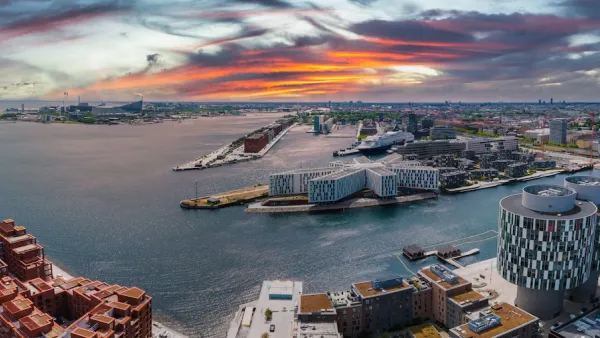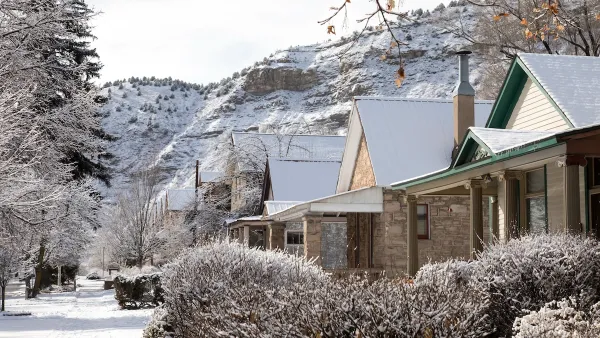Stan Cox argues that the massive square footage of so many modern houses -- no matter how "energy efficient" the construction -- is a luxury the planet can no longer afford.
"Monumental bad taste is indeed fascinating. But far more serious is the lasting environmental damage these incredible hulks do.
The manufacture and transportation of concrete to build a typical 3,000-square-foot house generate greenhouse gases amounting to 47 tons of carbon dioxide. And laid end to end, the pieces of lumber to make that house would stretch for more than four miles.
Wood, unlike concrete, gets some credit for being a "renewable" resource. The lumber and construction industries point out that they are taking greenhouse carbon out of the atmosphere and locking it into wood-frame houses. But that ignores the ecological effect of wrecking complex forest ecosystems to feed industrial wood production.
And in addition to requiring greater quantities of wood, concrete, plastics and copper, large houses have more volume to heat and cool, and more room for appliances and gadgets. Over a 50-year lifetime, a standard house pumps out greenhouse emissions amounting to 30 to 40 times the weight of the carbon that's socked away in its frame.
The bigger the house, the bigger the emissions. Based on University of Michigan figures, a typical 3,000-square-footer will emit as much carbon dioxide as would three - count ‘em, three - 16-miles-per-gallon SUVs driven the national vehicle average of 12,000 miles per year over 50 years.
Energy consumption is being addressed in a limited way by eco-friendly construction. But a 2005 analysis in the Journal of Industrial Ecology concluded that a 3,000-square-foot, super-efficient house consumes 50 percent more energy than does a 1,500-square-foot house built only to mediocre energy standards."
FULL STORY: SUVs Without Wheels

Analysis: Cybertruck Fatality Rate Far Exceeds That of Ford Pinto
The Tesla Cybertruck was recalled seven times last year.

National Parks Layoffs Will Cause Communities to Lose Billions
Thousands of essential park workers were laid off this week, just before the busy spring break season.

Retro-silient?: America’s First “Eco-burb,” The Woodlands Turns 50
A master-planned community north of Houston offers lessons on green infrastructure and resilient design, but falls short of its founder’s lofty affordability and walkability goals.

Test News Post 1
This is a summary

Analysis: Cybertruck Fatality Rate Far Exceeds That of Ford Pinto
The Tesla Cybertruck was recalled seven times last year.

Test News Headline 46
Test for the image on the front page.
Urban Design for Planners 1: Software Tools
This six-course series explores essential urban design concepts using open source software and equips planners with the tools they need to participate fully in the urban design process.
Planning for Universal Design
Learn the tools for implementing Universal Design in planning regulations.
EMC Planning Group, Inc.
Planetizen
Planetizen
Mpact (formerly Rail~Volution)
Great Falls Development Authority, Inc.
HUDs Office of Policy Development and Research
NYU Wagner Graduate School of Public Service




























